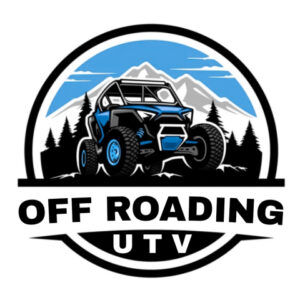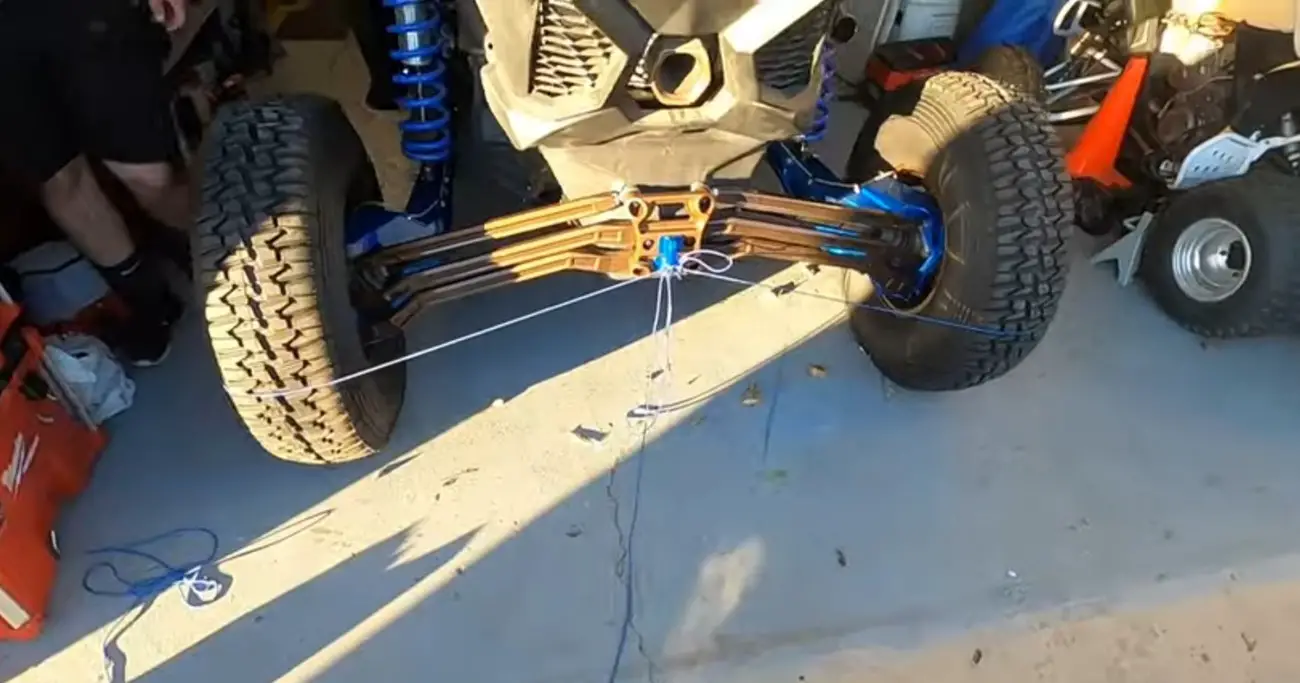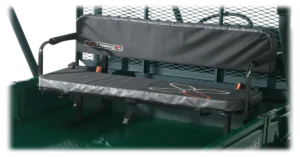I parked my UTV on a level surface, checked tire pressure, and adjusted the toe alignment for optimal performance.
The importance of proper alignment cannot be overstated when it comes to preserving your UTV’s (Utility Terrain Vehicle) maximum performance and handling. Numerous problems, such as uneven tyre wear, sluggish steering response, and poorer stability, might result from a misaligned UTV. This comprehensive step-by-step genuine owner’s guide has been created to assist UTV owners in resolving alignment issues.
To align a UTV, follow these steps:
- Park the UTV on a flat surface and ensure the tires are properly inflated.
- Locate the adjusting sleeves on the tie rods and loosen the lock nuts.
- Use a wrench to turn the adjusting sleeves, either in or out, to adjust the toe alignment.
- Once the desired alignment is achieved, tighten the lock nuts to secure the adjustment.
| Parameter | Description |
|---|---|
| Toe Alignment | The angle formed by the tires’ deviation from parallel with each other. Positive toe indicates the tires point inward, negative toe indicates they point outward. |
| Camber Alignment | The angle formed by the tires’ tilt inward or outward from the vertical. Positive camber indicates the top of the tire leans out, negative camber indicates it leans in. |
| Caster Alignment | The angle between the steering axis and a vertical line when viewed from the side of the UTV. Positive caster enhances stability and straight-line tracking. |
| Steering Axis Inclination (SAI) | The angle between the steering axis and a vertical line when viewed from the front of the UTV. SAI helps ensure proper steering wheel returnability. |
I will provide you with a clear and thorough explanation of the UTV alignment procedure in this extensive tutorial. I will discuss the significance of alignment and how it affects the performance of your vehicle before delving into the different alignment components and how they impact the UTV’s handling qualities. The basis for the succeeding steps will be solidified by understanding the fundamentals.
I will provide a step-by-step process for harmonising your UTV with a focus on usefulness. Each step will be carefully taught to ensure appropriate execution, from assessing ride height and camber to setting toe-in and caster. Additionally, I will offer insightful advice from actual owners who have dealt with alignment problems, giving you useful information and lessons learnt from their experiences.
You may effectively align your UTV by using the knowledge and assurance you receive from reading this genuine owner’s handbook. In addition to improving performance and handling, a correctly aligned UTV will also increase the longevity of your tyres and other parts. Prepare to take control of your UTV’s alignment and ride more smoothly and comfortably on all of your adventures.
As I loosened the lock nuts on the tie rods, I prepared to tweak my UTV’s alignment for smoother handling.
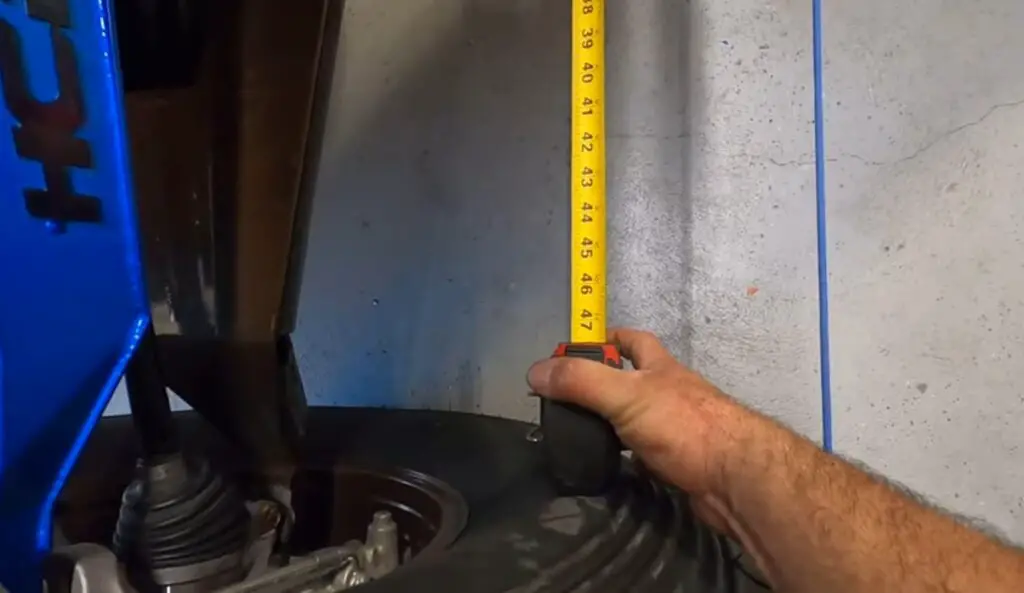
Keep reading the article to get more information about UTV Alignment.
UTV Alignment Tool
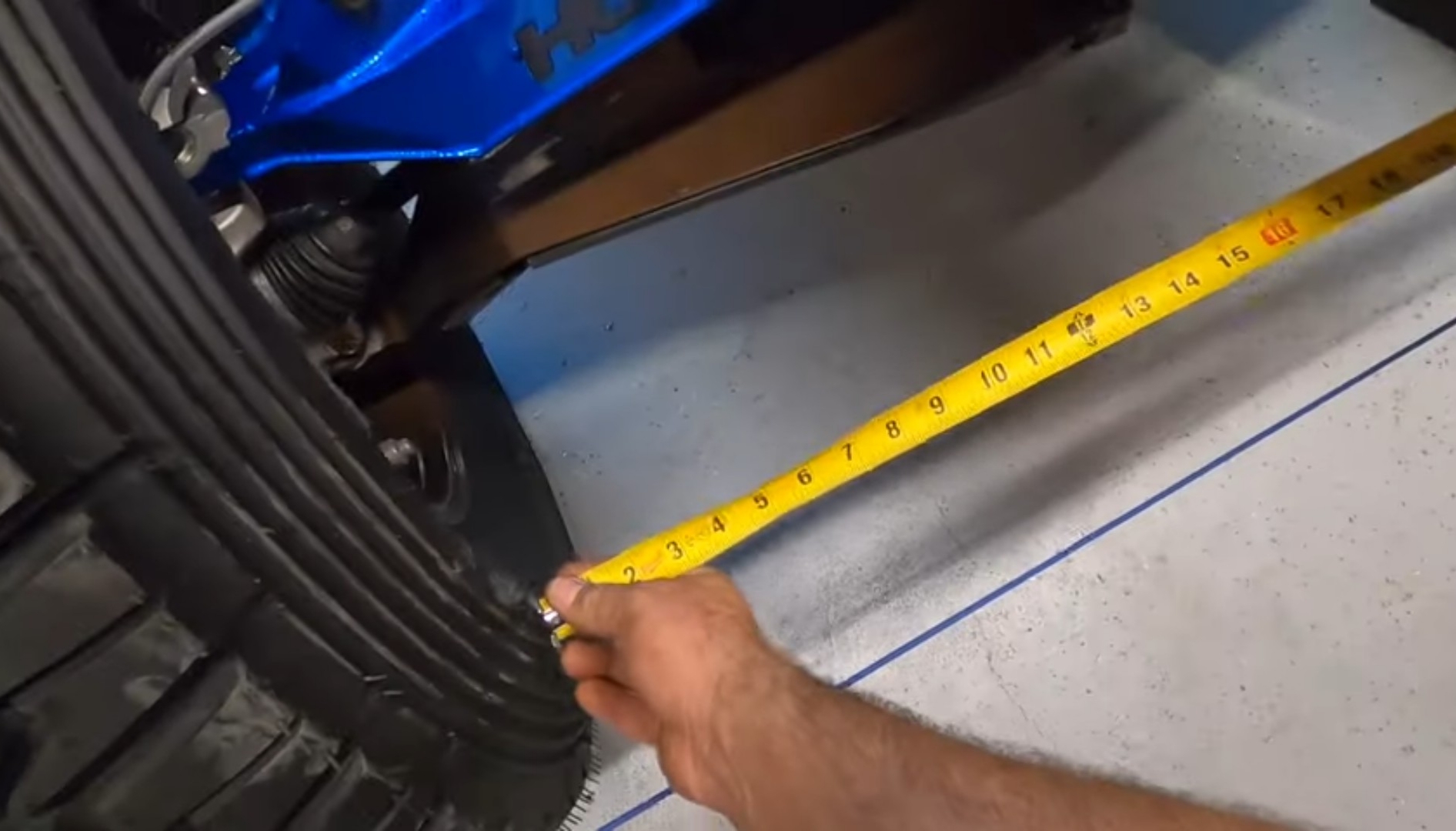
Side By Side Alignment
- A UTV alignment tool is a specialized device designed to ensure the correct alignment of the wheels and suspension components on a Utility Task Vehicle (UTV).
- This tool is essential for maintaining optimal performance and safety.
Align UTV And Side By Side
It typically consists of laser-guided or digital technology that measures the angles and positions of the wheels and helps technicians make precise adjustments to toe, camber, and caster angles. Proper UTV alignment enhances stability, tire wear, and handling, making it a crucial tool for UTV enthusiasts and mechanics.
UTV Alignment Cost
ATV And UTV Alignment
- The cost of a UTV alignment can vary depending on several factors.
- Typically, a basic UTV alignment can range from $50 to $100. However, the cost may increase if additional adjustments or repairs are needed.
Utility Terrain Vehicles Alignment
Factors that influence the price include the type of UTV, the complexity of the alignment process, the geographic location of the service, and the labor rates of the service provider. Regular alignment maintenance is crucial to extend tire life and ensure safe and efficient UTV operation, making it a worthwhile investment for UTV owners.
With precision, I turned the adjusting sleeves to fine-tune the alignment, ensuring even tire wear and responsive steering.
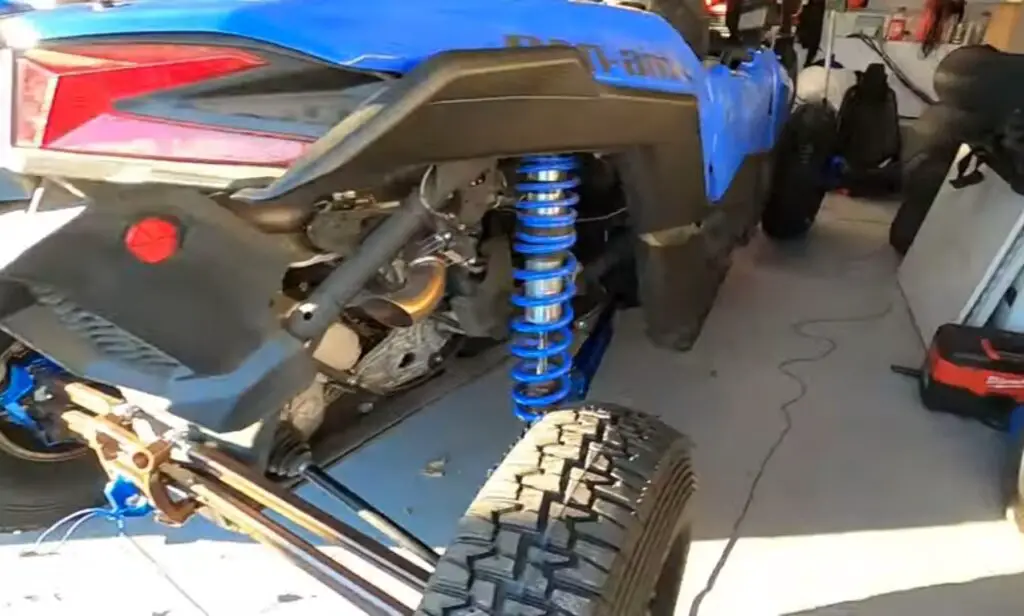
UTV Alignment Kit
All Terrain Vehicles Alignment
A UTV alignment kit is a set of specialized tools and equipment designed to help UTV owners or mechanics perform precise wheel alignments on Utility Task Vehicles. It typically includes items such as alignment bars, laser-guided alignment tools, measurement gauges, and other instruments to check and adjust toe, camber, and caster angles.
UTV, ATV And Side By Side Alignment
These kits provide a cost-effective solution for maintaining proper UTV wheel alignment, ensuring even tire wear, improved handling, and enhanced safety. They are essential for UTV enthusiasts and professionals seeking to optimize performance and prolong the lifespan of their UTVs.
RZR Alignment Tool
Alignment Kit For UTV And Side By Side
An RZR alignment tool is a specialized device used for aligning the wheels and suspension components on Polaris RZR vehicles, which are popular off-road recreational vehicles. These tools help ensure the correct alignment of the RZR’s wheels by measuring and adjusting factors like toe, camber, and caster angles.
UTV And Side By Side Alignment
They are typically designed for easy use by RZR owners or mechanics and help improve vehicle stability, handling, and tire wear. RZR alignment tools are crucial for maintaining optimal performance, safety, and extending the lifespan of these vehicles.
Securing the adjustment with tightened lock nuts, I felt confident in my UTV’s stability and performance on any terrain.
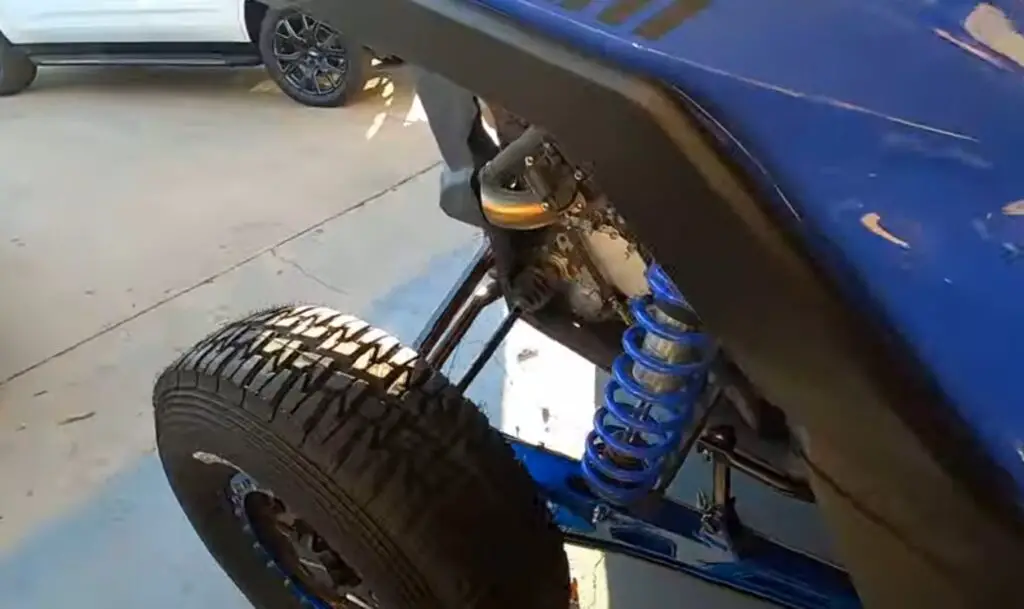
ATV Alignment Toe-In Or Out
Side By Side Alignment
In ATV alignment, toe-in or toe-out refers to the angle at which the front wheels are set relative to the rear wheels. Toe-in means the front wheels are angled inward towards each other, while toe-out means they are angled outward.
Align UTV And Side By Side
The ideal toe setting depends on the specific ATV model and its intended use. Generally, a slight toe-in is common for stability and even tire wear, while toe-out may be used for better turning responsiveness in certain situations. The correct toe alignment should be specified in the ATV’s manual or by a manufacturer’s recommendation.
ATV Wheel Alignment Tool
An ATV wheel alignment tool is a specialized device used to precisely adjust the alignment of an all-terrain vehicle’s wheels, ensuring correct toe, camber, and caster angles for optimal performance and safety.
RZR Alignment Specs
RZR alignment specs refer to the manufacturer’s recommended specifications for wheel alignment on Polaris RZR off-road vehicles. These specifications include values for toe, camber, and caster angles to ensure proper alignment for RZR models.
UTV Toe In Or Out
UTV toe-in or toe-out refers to the angle of the front wheels relative to the rear wheels. Toe-in means the front wheels point slightly inward, providing stability, while toe-out points them outward, improving turning responsiveness in specific situations.
What Is Side By Side Alignment?
Side-by-side alignment refers to the process of adjusting the wheel alignment, including toe, camber, and caster angles, on a side-by-side vehicle (also known as a UTV or SxS) to ensure optimal handling and safety.
How Do You Adjust The Camber on a UTV?
To adjust camber on a UTV, loosen the suspension components, move the wheel assembly in or out to achieve the desired camber angle, then tighten the components while ensuring the wheels are correctly aligned. Repeat for the other side for even camber.
What Is Normal Wheel Alignment?
Normal wheel alignment is the correct adjustment of a vehicle’s wheel angles to manufacturer-specified values. It includes setting the toe, camber, and caster angles to ensure optimal tire wear, stability, and handling.
What Are The Signs of Bad Alignment?
Signs of bad alignment include uneven tire wear, vehicle pulling to one side, steering wheel off-center, vibrations, and poor handling. These issues can result from incorrect toe, camber, or caster angles.
Ensuring proper tire inflation, I meticulously adjusted the toe alignment of my UTV, anticipating improved handling.
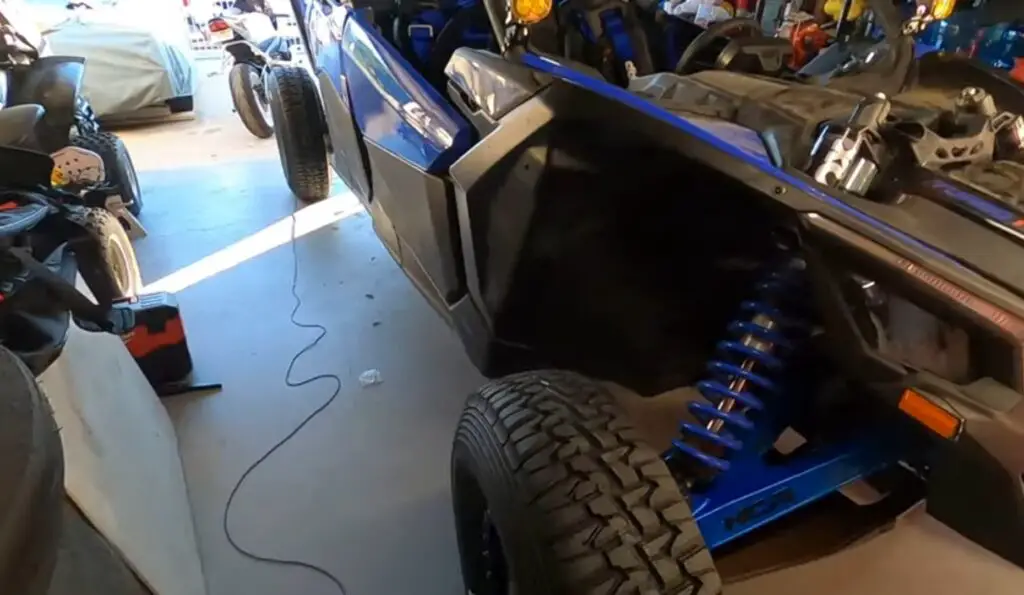
A Step-by-Step Guide to Mastering UTV Alignment: Side By Side Alignment
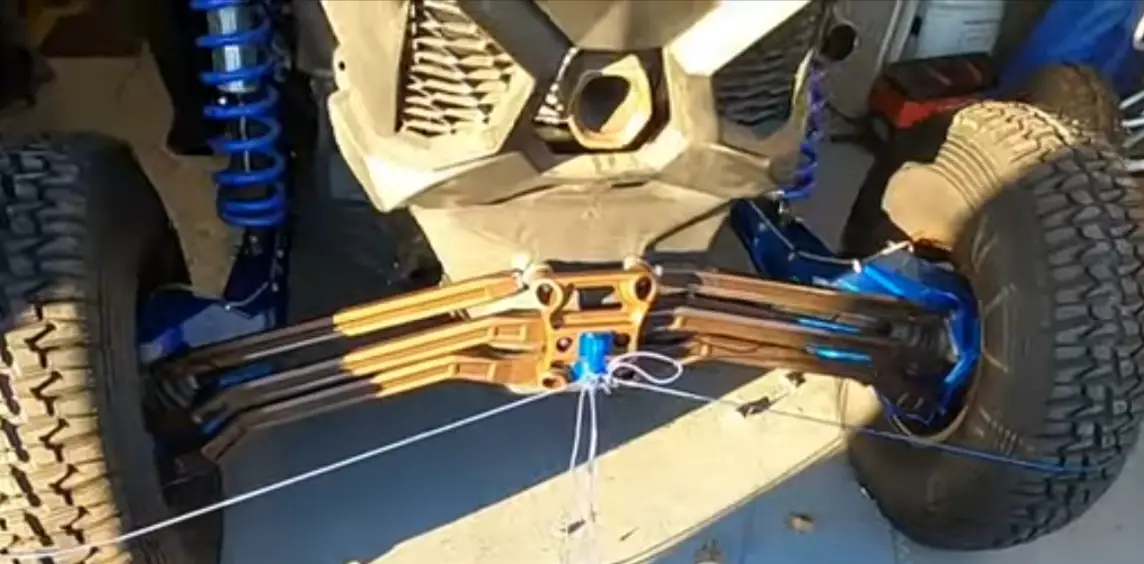
ATV And UTV Alignment
Maximising the performance and longevity of your UTV (Utility Terrain Vehicle) depends on maintaining appropriate alignment. A properly aligned UTV guarantees ideal handling, reduced tyre wear, and general stability. This step-by-step manual has been created to give you the knowledge and abilities necessary to produce accurate alignment results, assisting you in becoming a master of UTV alignment.
| Symptom | Description |
|---|---|
| Uneven Tire Wear | Excessive wear on the inner or outer edges of the tires. |
| Pulling or Drifting | The UTV tends to pull to one side or drift off-center while driving on a straight road. |
| Steering Wheel Off-Center | The steering wheel is not aligned with the vehicle’s direction when driving straight. |
| Unstable Handling | The UTV feels unstable, wanders, or requires constant steering corrections. |
This thorough guide will walk you through every step of UTV alignment, from comprehending its significance to carrying out the required changes. The importance of alignment and how it affects the vehicle’s handling and general performance will be discussed first. You will understand the importance of maintaining accurate alignment once you have a firm grasp of the essential concepts.
The step-by-step process for obtaining UTV alignment will then be covered in the guide. The topics of measuring and modifying ride height, camber, toe-in, and caster will all be covered. You will comprehend each step and be able to do it correctly if the instructions are clear and backed by diagrams and helpful hints.
I will also include tips and guidance from seasoned UTV owners who have perfected the art of alignment throughout the course. You can overcome any difficulties you may run across during the alignment process with the help of their practical advice and knowledge.
You will gain the knowledge and assurance necessary to perfect UTV alignment by carefully following this step-by-step manual. You may completely enjoy your off-road adventures by optimising the performance, handling, and safety of your UTV by achieving accurate alignment. So let’s set off on this adventure together and become actual experts in UTV alignment.
I carefully loosened the lock nuts on the tie rods, ready to correct any misalignment affecting my UTV’s performance.
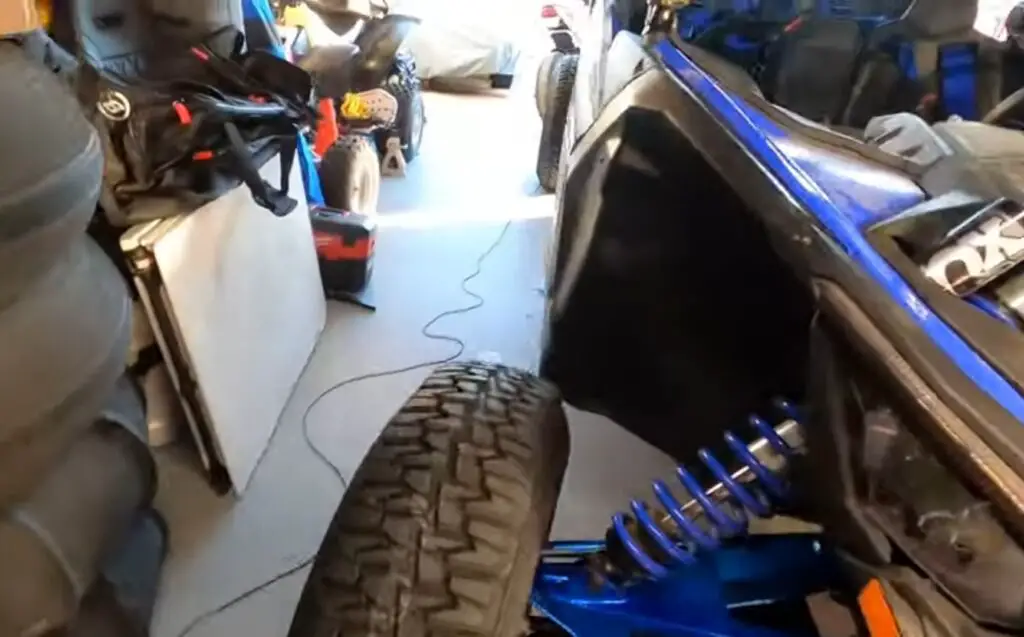
Real Owner Insights on the Importance of UTV Alignment: Align UTV And Side By Side
Beyond technical information, real-world experiences and insights from UTV owners who have seen the effects of good alignment on their vehicles are necessary to fully comprehend the significance of UTV alignment. I will give you insightful information from actual owners in this part, emphasising the importance of UTV alignment for a superior off-road experience.
Enhanced Handling and Stability: ATV And UTV Alignment
Your UTV’s handling and stability are greatly enhanced by proper alignment. After aligning their UTVs, actual owners saw a substantial improvement in responsiveness and control. You can comfortably navigate through difficult terrain, curves, and obstacles with accurate alignment, making the ride safer and more pleasurable.
Extended Tyre Life:
UTV tyres are used in harsh environments with fast turns and challenging terrain. Uneven tyre wear from misalignment can result in early tyre deterioration and decreased traction. The benefits of alignment on tyre longevity, which spare them the inconvenience and expense of routine tyre replacements, have been emphasised by actual owners. You can extend the life and improve the performance of your tyres by keeping them properly aligned.
Reduced Component Stress:
Drivetrain, steering, and suspension parts of UTVs can all be subjected to excessive stress as a result of misalignment. Owners in the real world have reported problems like premature wear, drooping suspensions, and even driveline vibrations as a result of misalignment. By aligning your UTV, you can make sure that the weight is distributed uniformly, avoiding stress on vital parts and extending their lifespan.
Fuel Efficiency:
After aligning their UTVs, real owners have seen gains in fuel efficiency. Misalignment can increase rolling resistance, which necessitates the expenditure of more energy to move the vehicle ahead. You can maximise fuel efficiency and get more mileage out of each tank by aligning your UTV.
Overall Performance and Enjoyment:
The overall performance and enjoyment of your UTV are influenced by proper alignment. Real owners have described how alignment has improved handling, smoother rides, and a greater sense of trust in their vehicle’s capabilities for off-roading. You can maximise the performance of your UTV and completely enjoy the thrill of off-road activities with careful alignment.
The practical advantages of UTV alignment are highlighted by these actual owner insights. You may enhance handling, prolong tyre life, lessen component stress, increase fuel efficiency, and enjoy your UTV more fully by giving proper alignment priority. So take the advise of knowledgeable UTV owners and prioritise alignment in your maintenance schedule.
Adjusting the toe alignment with precision, I aimed for optimal stability and responsiveness in my UTV.
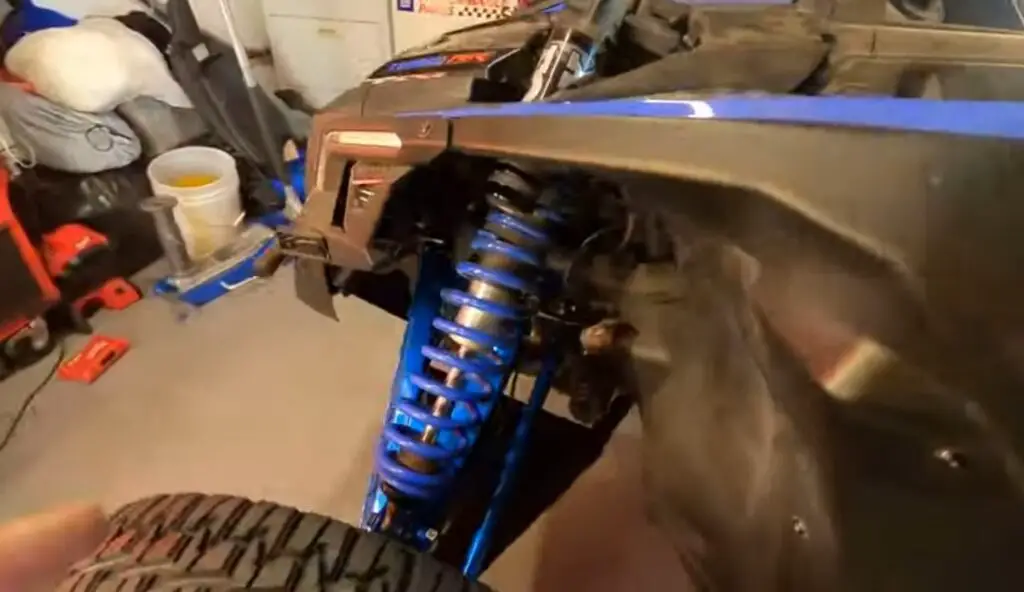
Detailed instructions for DIY UTV Alignment: Utility Terrain Vehicles Alignment
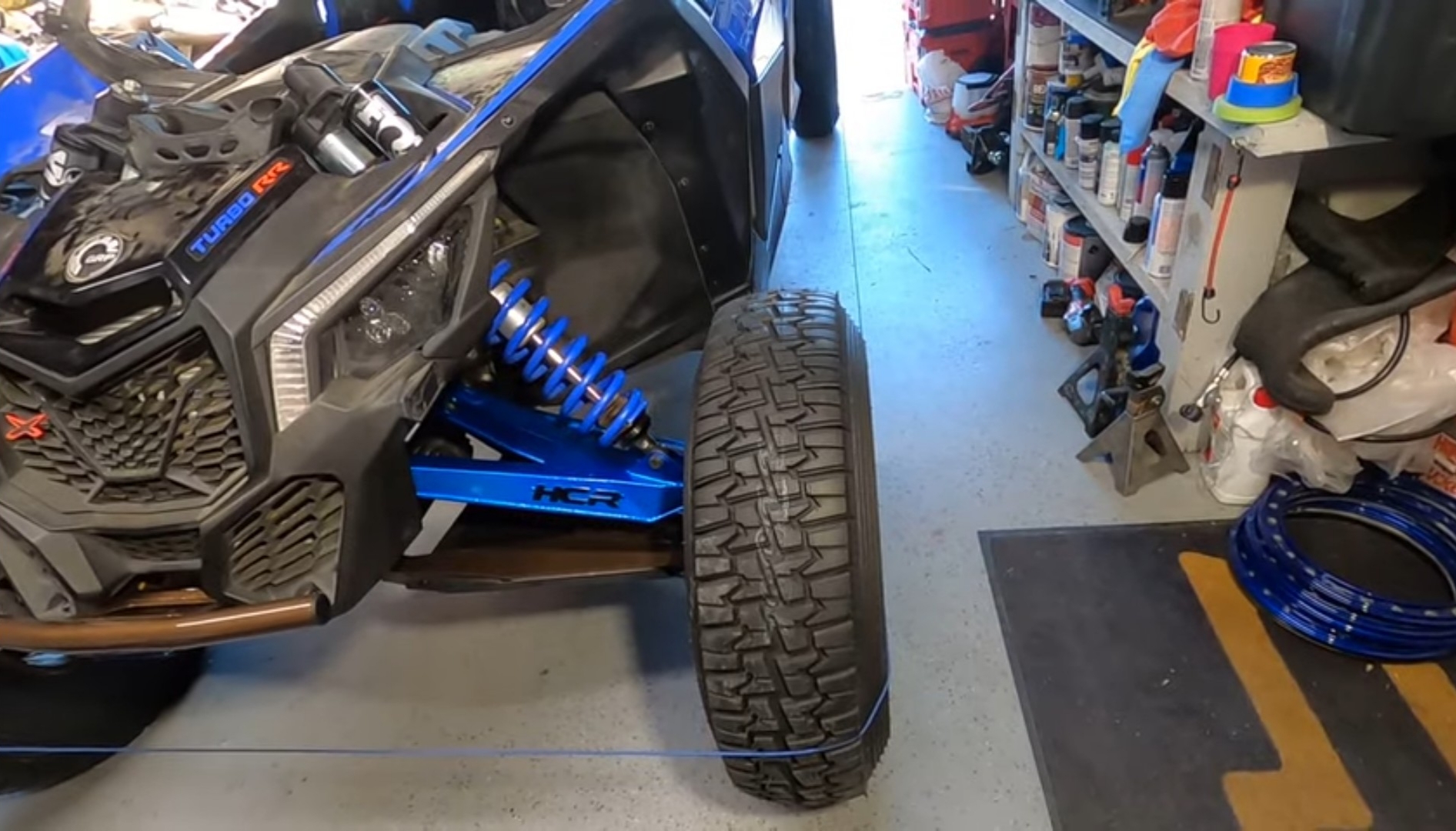
Utility Terrain Vehicles Alignment
You can keep your UTV’s best performance and handling while saving time and money by doing a DIY alignment. I will provide you step-by-step directions in this section on how to effectively complete a UTV alignment on your own. It is crucial to remember that these instructions are only general recommendations, and it is advised to refer to the owner’s manual of your UTV for precise alignment requirements and instructions.
Step 1: Gather the required tools and equipment
Gather all of the necessary tools and equipment before beginning the alignment process. This normally consists of a level, a tape measure, sockets or wrenches and a jack or lift to raise your UTV safely off the ground.
Step 2: Evaluate the state of the alignment at present.
Examine your UTV’s present alignment situation before making any alterations. Watch for indications of unstable or uneven tyre wear, as well as steering issues. You can determine which alignment settings need adjusting with the aid of this examination.
Step 3: Determine the riding height.
The riding height of your UTV should be measured using a level and a tape measure. For information on recommended riding height standards, consult your owner’s handbook. Use the jack or lift to elevate or lower your UTV as necessary if changes are required.
Step 4: Examine and correct toe-in
The front wheels’ angle in relation to one another is referred to as toe-in. Using the tape measure, find the distance between the front and back tyres’ midpoints to determine the amount of toe-in. The front and rear tyre measurements should be compared. Toe-in is indicated if the front measurement is smaller. To achieve the appropriate toe-in alignment, adjust the tie rod ends. After making modifications, make sure the lock nuts are properly tightened.
Step 5: Calculate and modify camber.
When viewed from the front or back of the UTV, camber is the inclination of the tyres. Place a level against the sidewall of the tyre to measure the camber angle. For information on appropriate camber standards, consult your owner’s handbook. If adjustments are required, remove the camber adjustment nuts using the wrenches or sockets and make the required changes. After modifications, firmly tighten the bolts.
Step 6: Assess and correct the caster (if necessary)
Caster describes the steering axis’ forward or backward tilt when seen from the side of the UTV. The casters on all UTVs are not adjustable. Refer to your owner’s handbook for the recommended specifications and adjustment steps if your UTV has adjustable caster. Make the required modifications using the proper tools, and make sure the bolts are properly secured.
Step 7: Test and fine-tune
After making the preliminary adjustments, take your UTV out for a test drive in a secure setting. Pay close attention to the steering feel, tyre wear, and handling. If more tweaks are required, fine-tune the alignment for optimum performance.
DIY UTV alignments need to be done carefully and according to manufacturer guidelines. You can confidently align your UTV and benefit from better performance, handling, and tyre life by following these detailed instructions. Always refer to your owner’s manual for precise alignment standards, and get in touch with experts if you run into problems or have particular worries.
With each turn of the adjusting sleeves, I fine-tuned my UTV’s alignment, prioritizing safety and performance.
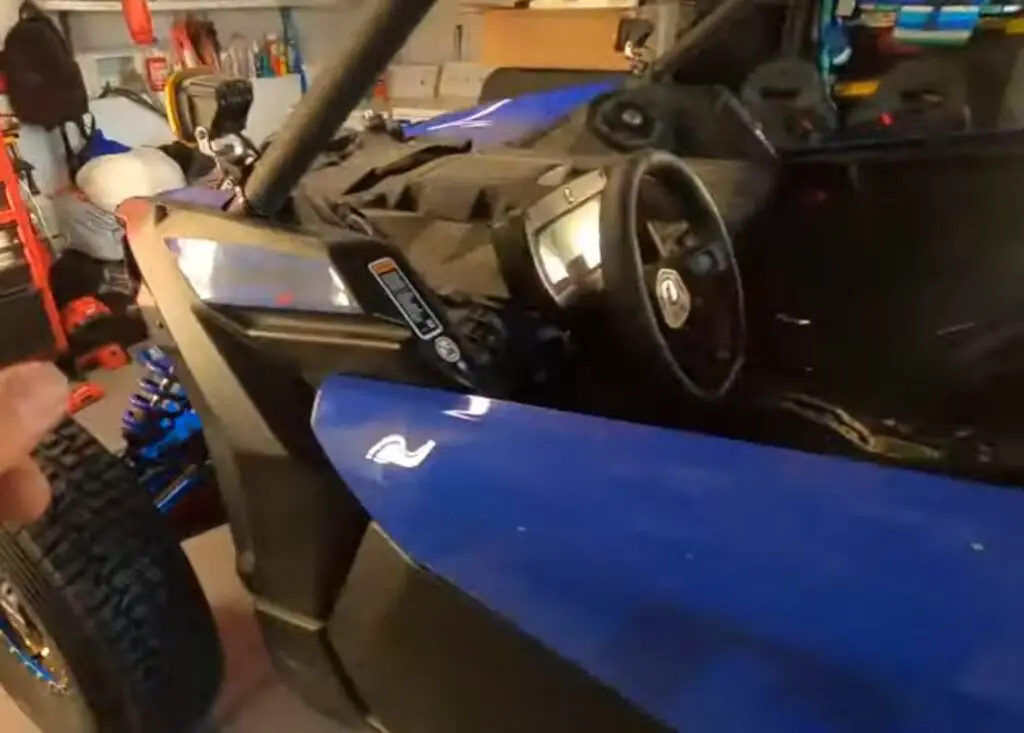
The Ultimate UTV Alignment Guide: All Terrain Vehicles Alignment
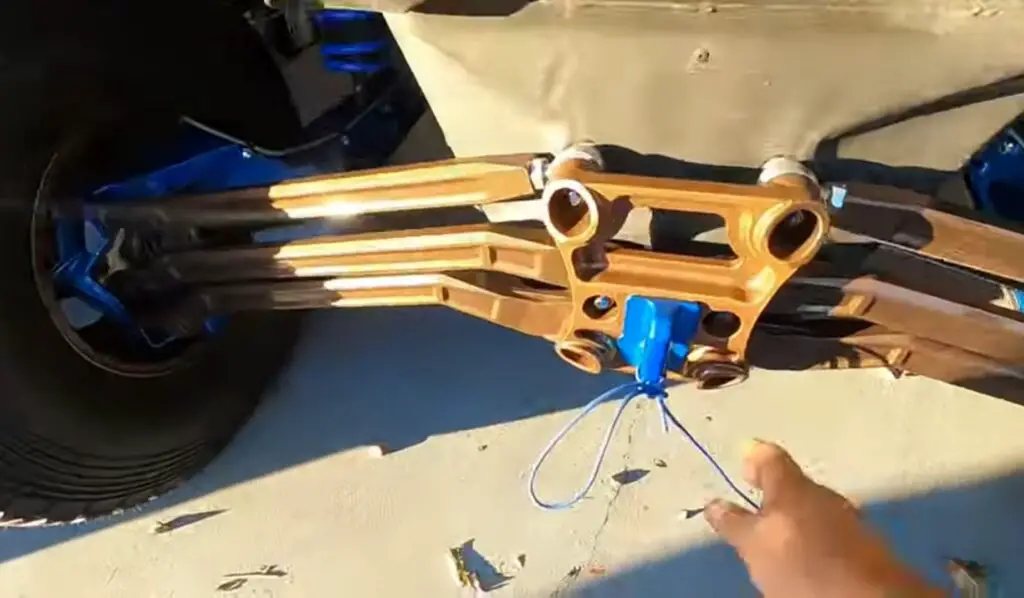
To maximise performance, handling, and overall vehicle stability, UTV alignment must be precise. You will receive thorough guidelines to assist you in achieving accurate alignment results from this ultimate UTV alignment guide. You can make sure your UTV is performing at its peak on every off-road excursion by taking the steps outlined below.
Step 1: Set up your workspace and tools
Make sure you have the right workspace and the required tools before beginning the alignment. This normally consists of a level, a jack or lift, a flat surface, a tape measure, sockets or wrenches, and these items.
Step 2: Determine current alignment condition
Examine tyre wear patterns, steering response, and overall stability to determine your UTV’s current alignment condition. While driving, take note of any problems that can point to misalignment, such as uneven tyre wear or drifting.
Step 3: Measure and adjust ride height
Measure and adjust the ride height of your UTV in step three using a level and a tape measure. For specifics on recommended riding height, refer to your owner’s handbook. To attain the ideal ride height, adjust the suspension if necessary, making sure that both sides have the same dimensions.
Step 4: Examine and correct toe-in
The front wheels’ angle in relation to one another is referred to as toe-in. Measure the space between the front and back tyres at the height of the tyres’ midway using a tape measure. To get the correct toe-in measurement, adjust the tie rods while securing the lock nuts.
Step 5: Determine and correct camber
When observed from the front or back of the UTV, the tilt of the tyres is referred to as camber. Place a level against the sidewall of the tyre to measure the camber angle. For information on appropriate camber requirements, refer to your owner’s handbook. By releasing the camber adjustment nuts and making the necessary adjustments, the camber can be adjusted. After modifications, don’t forget to tighten the bolts securely.
Step 6: Assess and correct the caster (if necessary)
Caster describes the steering axis’ forward or backward tilt when seen from the side of the UTV. While some UTVs can have their caster adjusted, others might not. Consult your owner’s handbook for the recommended specs and adjustment steps, if the item is adjustable. If any changes are required, use the proper tools and make sure the bolts are tightly fastened.
Step 7: Test and fine-tune
Take your UTV for a test drive in a secure area to assess the alignment modifications. Pay particular attention to the steering feel, tyre wear, and handling. To fine-tune the alignment for optimum performance and stability, make additional changes as necessary.
You may obtain accuracy in your UTV’s alignment by using this comprehensive alignment guide. Always refer to your owner’s manual for details on your unique UTV model’s characteristics and operating instructions. Check and maintain your UTV’s alignment frequently to make sure it stays in top shape and gives you the best performance and a safe off-roading experience.
I tightened the lock nuts, confident that my UTV’s alignment would enhance its overall handling and longevity.
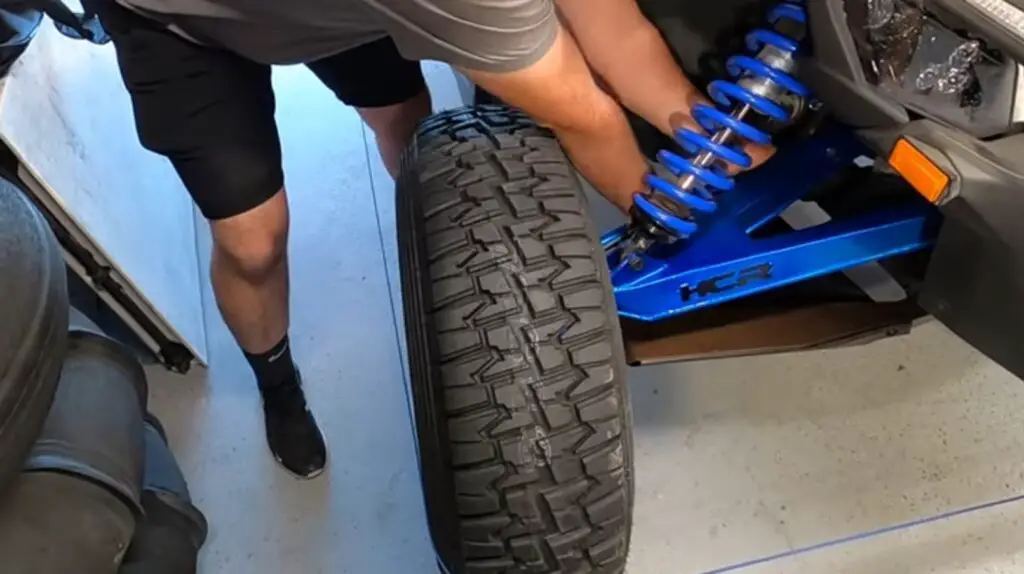
UTV Alignment Techniques for Optimum Performance: UTV, ATV And Side By Side Alignment
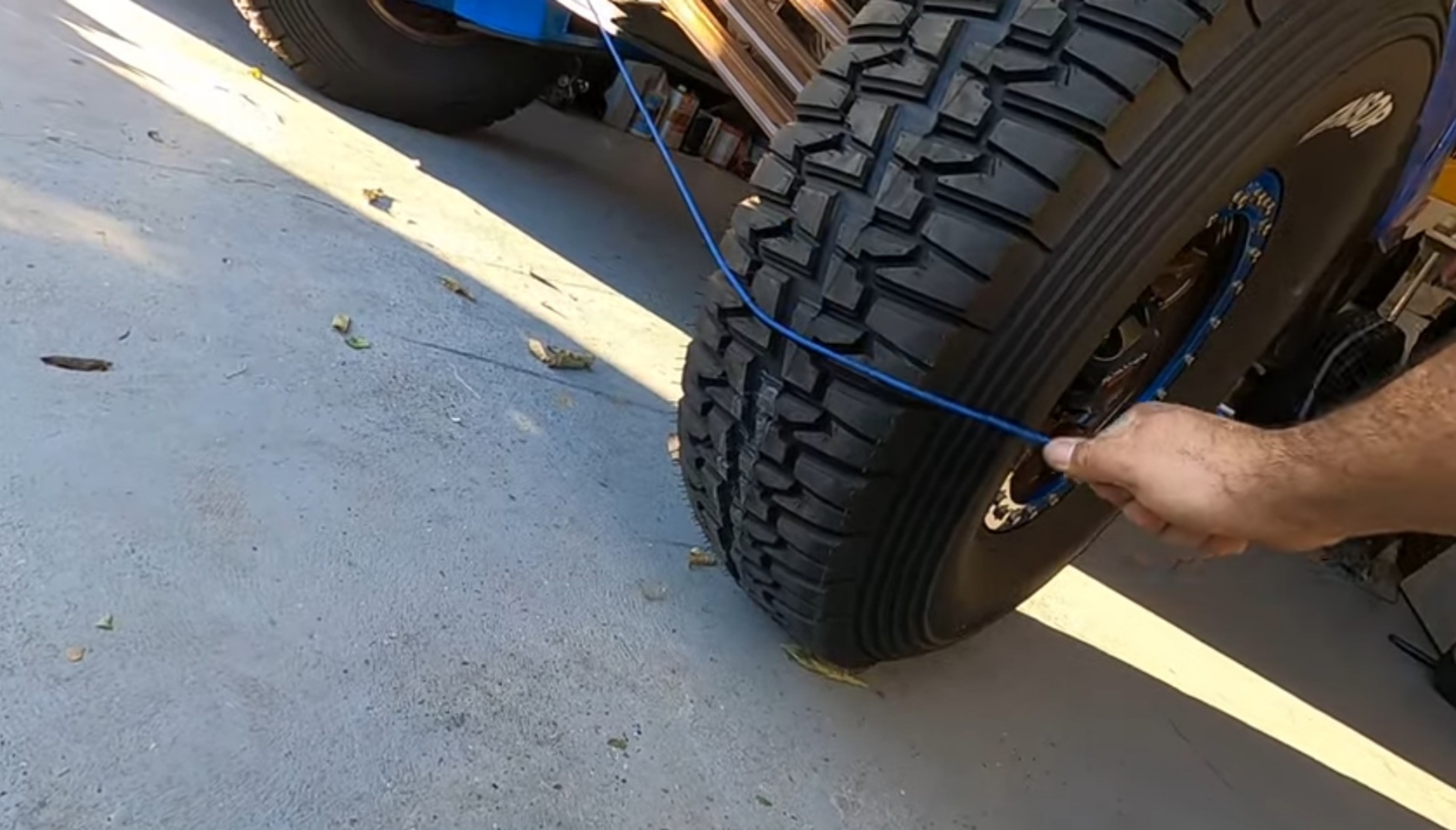
Proper alignment is crucial to unlocking maximum performance and maximising the potential of your UTV (Utility Terrain Vehicle). Accurate UTV alignment guarantees better handling, more stability, and better performance all around. In this part, I will look at sophisticated alignment methods that can help you get the best performance out of your UTV.
Laser Alignment Systems:
Think about purchasing a laser alignment device made especially for UTVs. To offer precise and accurate measurements of alignment characteristics including toe-in, camber, and caster, these devices use laser technology. You can confidently obtain optimal alignment thanks to the greater accuracy and simplicity of laser alignment equipment.
Suspension Tuning:
Aligning the suspension’s parts is essential for improving UTV performance. Pay close attention to how the A-arms, shocks, and other suspension components are positioned. Make sure they are adjusted and aligned correctly in accordance with the manufacturer’s instructions. Tuning the suspension can considerably enhance the handling, responsiveness, and ride comfort.
Dynamic Alignment:
While static alignment is the norm, dynamic alignment goes a step further by taking the UTV’s alignment into account while it is actually being driven. In this method, alignment parameters are assessed while the UTV is moving. You can adjust the alignment for optimum performance by examining how the UTV operates in actual situations.
Tyre Pressure Optimisation:
The alignment and performance of UTVs are greatly influenced by proper tyre pressure. Proper tyre inflation ensures balanced weight distribution, enhanced traction, and superior handling. For the recommended tyre pressure, see the manufacturer’s guidelines, then check and adjust the pressure as needed on a regular basis.
Regular Inspections and Maintenance:
Maintaining optimum UTV performance involves more than simply alignment tweaks. Regular inspections and maintenance are essential. Lubricate the suspension parts of your UTV, check them for wear or damage, and make sure all the fasteners are secure. To increase tyre longevity and ensure peak performance, regularly check your tyres for wear patterns and rotate them as recommended.
Expert Help:
While using DIY alignment procedures might be useful, getting expert help will help your UTV function even better. Advanced tools, skill sets, and experience are used by professional alignment services to obtain exact alignment and fine-tune your UTV for best performance. To maximise the performance of your vehicle, think about speaking with a reputable UTV alignment expert.
You may maximise the performance of your vehicle by using these cutting-edge UTV alignment techniques. Use laser alignment devices, concentrate on suspension tuning, take into account dynamic alignment, regulate tyre pressure and place a high priority on routine maintenance and inspections.
Checking tire pressure and adjusting alignment, I ensured my UTV was ready for any adventure that lay ahead.
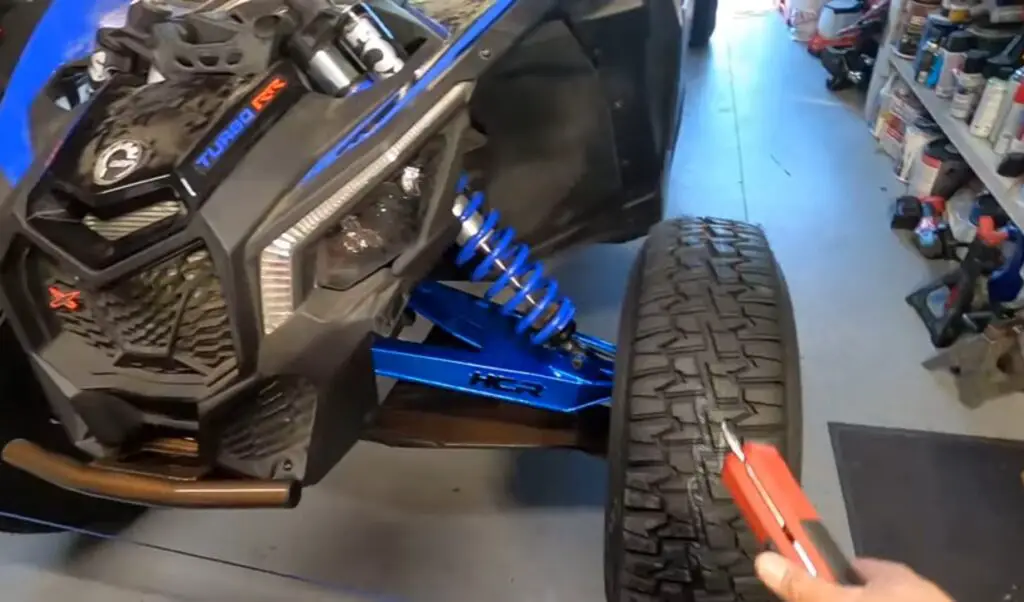
DIY UTV Maintenance: A Guide to Correct UTV And Side By Side Alignment
Owners of UTVs who wish to guarantee peak performance and increase the lifespan of their vehicles must maintain proper alignment. Even though there are professional alignment services available, doing your own DIY UTV alignment can be an enjoyable and affordable alternative. I will walk you through each step in this guide so you can get your UTV properly aligned.
Step 1: Collect the required tools.
Before beginning the alignment process, collect the required tools. This normally consists of a level, a jack or raise, a tape measure, sockets, and tools, as well as a suitable workspace.
Step 2: Evaluate the state of the alignment at present.
Examine the tyre wear patterns on your UTV and any steering or handling concerns to determine how well it is currently aligned. While driving, take note of any irregularities that can point to misalignment, including unequal tyre wear.
Step 3: Measure and toe-in.
The front wheels’ angle in relation to one another is referred to as toe-in. Measure the space between the front and back tyres at the height of the tyres’ midway using a tape measure. To get the appropriate toe-in measurement, adjust the tie rods. Make sure the dimensions are the same on all sides, and then tighten the lock nuts.
Step 4: Determine and correct camber:
When observed from the front or back of the UTV, the tilt of the tyres is referred to as camber. Place a level against the sidewall of the tyre to measure the camber angle. By releasing the camber adjustment nuts and making the necessary adjustments, the camber can be adjusted. After modifications, tighten the nuts firmly in accordance with the required camber range specified in your UTV’s specs.
Step 5: Check and adjust ride height
Use a level and a tape measure to measure your UTV’s ride height in step five and make necessary adjustments. Make careful to measure the distance equally on both sides between certain spots on the chassis and the ground. To get the required ride height, adjust the suspension’s springs or shocks. Make careful to adhere to the ride height specifications advised by the manufacturer.
Step 6: Test and fine-tune:
Take your UTV for a test drive in a secure area to assess the alignment modifications in step six: test and fine-tune. Pay particular attention to the steering feel, tyre wear, and handling. If more tweaks are required, fine-tune the alignment for optimum performance.
You can maintain proper alignment and enhance the performance of your UTV by doing a DIY alignment. You may obtain proper alignment and benefit from enhanced handling, reduced tyre wear, and overall performance by following this guide and using the required tools.
Carefully tightening the lock nuts, I knew my UTV’s alignment was now optimized for maximum performance.
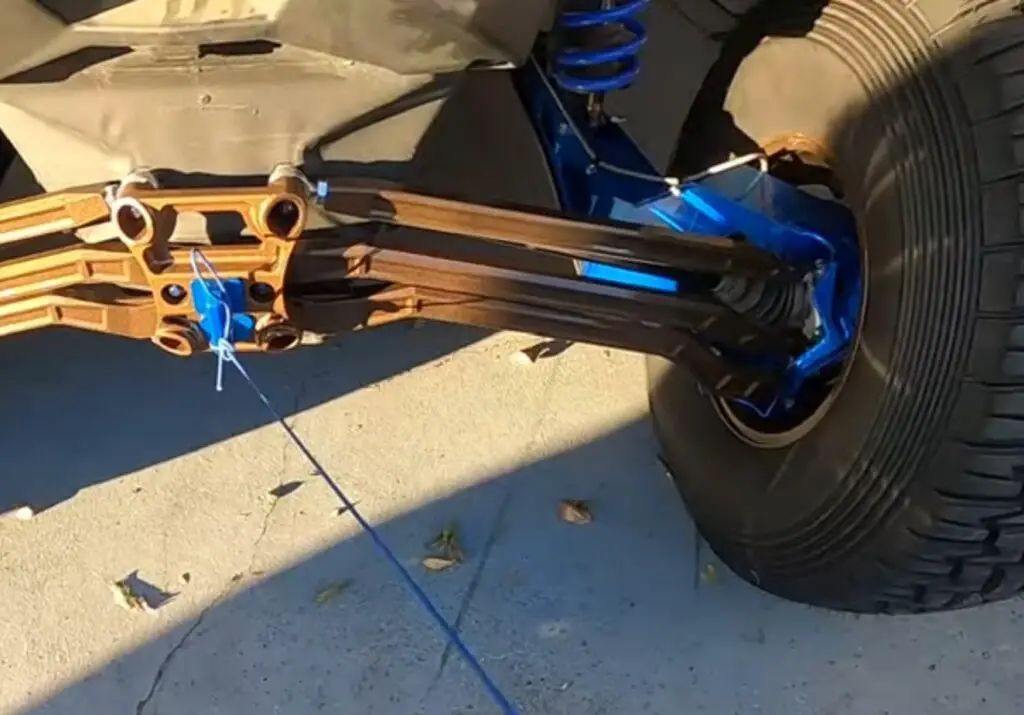
Real Owner Advice for UTV Alignment: Alignment Kit For UTV And Side By Side
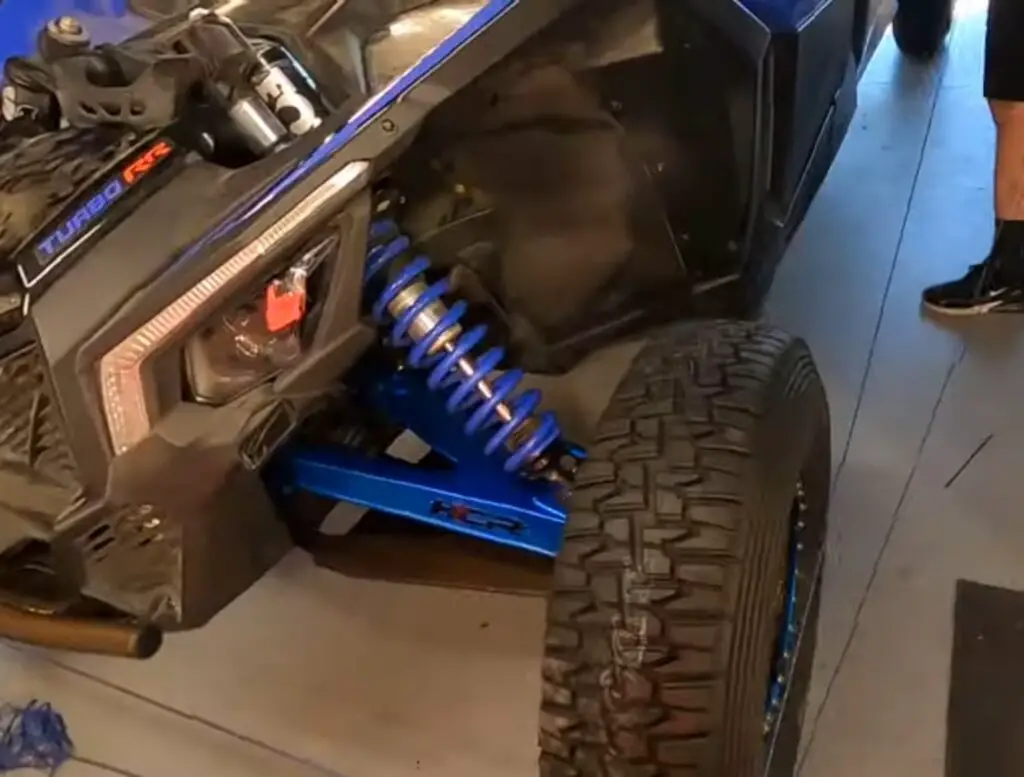
The opinions of real owners who are seasoned enthusiasts can provide insightful guidance and useful suggestions when it comes to UTV alignment. UTV owners frequently want to make sure their vehicles drive straight so they can provide stability and excellent handling. To assist you in getting a UTV alignment that maintains your vehicle steering straight, I will offer tips from actual owners in this section.
Regularly check your tyre pressure:
Real owners stress the value of keeping adequate tyre pressure for straight steering. The UTV may pull to one side or have variable steering reaction if the tyre pressure is uneven. Maintain consistent pressure throughout all tyres by routinely checking and adjusting tyre pressure in accordance with the manufacturer’s guidelines.
Focus on Toe-In Alignment:
Experienced drivers have discovered that having the proper toe-in alignment is essential for straight-ahead steering. The front wheels’ angle in relation to one another is referred to as toe-in. Aim for a slightly toe-in alignment that falls within the suggested parameters. To get the appropriate toe-in measurement, carefully adjust the tie rods, making that the measurements are the same on both sides.
Pay Attention to Wheel Bearings:
Wheel bearings are crucial to straight steering. Wheel bearings should be periodically inspected and maintained, according to real owners. Make that they are adequately lubricated, damage- and excessive wear-free. The vehicle’s ability to steer straight can be hampered by faulty wheel bearings.
Inspection of Suspension Components:
Real owners stress the significance of checking suspension components for wear or damage. Bushings, ball joints, and tie rod ends that are worn out might affect the steering and alignment of a UTV. To maintain good alignment and straight steering, examine these parts frequently and replace them as necessary.
Seek Professional Alignment Services:
While DIY alignment is sometimes successful, real owners suggest waiting for correct and precise results by using professional alignment services. Professional alignment specialists have the knowledge and specialised tools to guarantee that the alignment of your UTV is precisely adjusted. They are able to identify and address any underlying problems that can prevent steering straight.
Test and Fine-Tune:
After making alignment modifications, real owners advise taking your UTV for a test drive. Watch the steering reaction and overall stability closely. If more modifications are required, fine-tune the alignment to get the best steering straight.
Real owner feedback provides insightful tips on how to get UTV alignment that maintains your vehicle’s steering straight. Check tyre pressure frequently, pay attention to toe-in alignment, examine wheel bearings and suspension parts, and use a professional alignment service for accuracy. These suggestions can help you steer your UTV straight, giving you stability, control, and a pleasurable off-roading experience.
Comprehensive UTV Owner’s Guide: Alignment Made Simple
In order to maintain your UTV’s (Utility Terrain Vehicle) maximum performance and safety, alignment is essential. However, many UTV owners find it intimidating to comprehend and carry out alignment adjustments. In this thorough UTV owner’s manual, I simplify the alignment procedure and give you detailed directions so you may easily accomplish appropriate alignment.
1: Importance of UTV Alignment
The importance of UTV alignment will be explained in this chapter, along with how it affects handling, tyre wear, and overall vehicle performance. Your motivation to give alignment maintenance and corrections top priority will come from understanding why alignment matters.
2: Misalignment Warning Signs
For prompt intervention, spotting misalignment symptoms is essential. I will talk about typical warning signs include uneven tyre wear, pulling to one side or drifting, and diminished stability. You can treat alignment concerns as soon as they arise by being aware of these symptoms.
3: Homemade Alignment Equipment and Setup
Prepare a suitable workstation and arm yourself with the required equipment before completing DIY alignment. We’ll list the necessary instruments, such a tape measure, level, wrenches, and jacks, and offer advice on how to organise your workstation safely and comfortably.
4: Step-by-Step Alignment Procedure
Your step-by-step manual for establishing appropriate alignment will be provided in this chapter. The alignment procedure will be broken down into manageable steps, including determining and modifying toe-in, camber, and ride height. There will be thorough explanations of each stage, along with precise directions and useful advice.
5: Testing and fine-tuning
It’s crucial to test your UTV after making the alignment adjustments and fine-tune as necessary. I will advise you on how to test-drive your UTV and gauge its steering response, stability, and tyre wear. If additional alterations are required, I will offer advice on how to perfect your alignment for peak performance.
6: Schedule for upkeep and alignment
Regular maintenance is essential to ensuring alignment integrity over the long run. I will go over suggested maintenance procedures include checking suspension parts, keeping an eye on tyre pressure and setting up routine alignment inspections. You may increase alignment accuracy and maintain overall performance by implementing these procedures into your regimen for UTV maintenance.
Alignment becomes a simple operation by adhering to our thorough UTV owner’s handbook. You will acquire the skills and self-assurance needed to attain and maintain perfect alignment, improving your UTV’s handling, stability, and tyre longevity. Keep in mind that alignment is a crucial component of owning a UTV, and with the help of this tutorial, you can streamline the procedure and benefit from an enhanced off-road experience.
Adjusting the toe alignment, I aimed to eliminate any irregular tire wear or steering issues in my UTV.
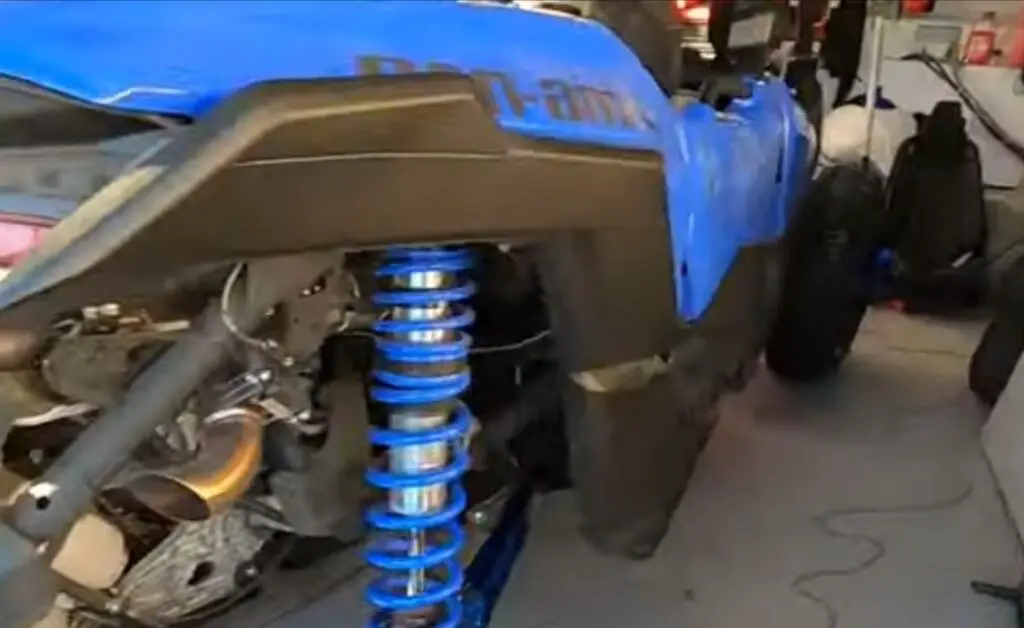
Conclusion
With the knowledge and step-by-step directions provided in this comprehensive actual owner guide for UTV alignment in 2024, you may achieve accurate alignment. You may improve your UTV’s handling, performance, and general stability by using this instructions. Keep your vehicle in good alignment to increase its lifespan and to enjoy a smoother, more controlled off-road experience. Utilise this thorough guide to take charge of your UTV’s alignment and realise all of its potential.
Hope you got all the information about UTV Alignment in this article.
FAQs
Go through the FAQs regarding UTV Alignment to solve any doubts.
How frequently should I inspect and make alignment adjustments to my UTV?
It is advised to check your UTV’s alignment at least once a year or if you observe any misalignment-related symptoms, like uneven tyre wear or steering problems. The best alignment may be kept by performing routine maintenance and frequent inspections.
Should I get an expert to help with UTV alignment, or can I do it myself?
While it is feasible to align objects on your own, getting expert assistance can guarantee precise and exact outcomes. Professional alignment specialists can fine-tune the alignment of your UTV using specialised tools and knowledge. It is advised to consult a specialist if you are unsure or run into problems.
What are the typical UTV misalignment symptoms?
Uneven tyre wear, drifting or tugging to one side, difficulties keeping a straight path, and impaired stability when driving are typical indications of misalignment. Any of these symptoms might alert you to the possibility that your UTV needs alignment modifications.
Does my UTV’s alignment need to be adjusted on all four wheels?
To achieve balanced alignment and optimum performance, it is crucial to make alignment modifications to your UTV’s four wheels. Any wheel that is neglected can cause problems with stability, tyre wear, and handling.
What equipment do I need to align a UTV?
A tape measure, a level, wrenches or sockets, a jack or lift, and a proper workstation are usually needed for UTV alignment. You may precisely measure and modify the alignment characteristics of your UTV with these tools.
How can I tell if the alignment adjustments I made to my UTV were successful?
After making alignment modifications, test-drive your UTV in a secure location. Pay particular attention to the tyre wear, stability, and steering reaction. The alignment adjustments were successful if the UTV steers straight, handles smoothly, and displays even tyre wear.
